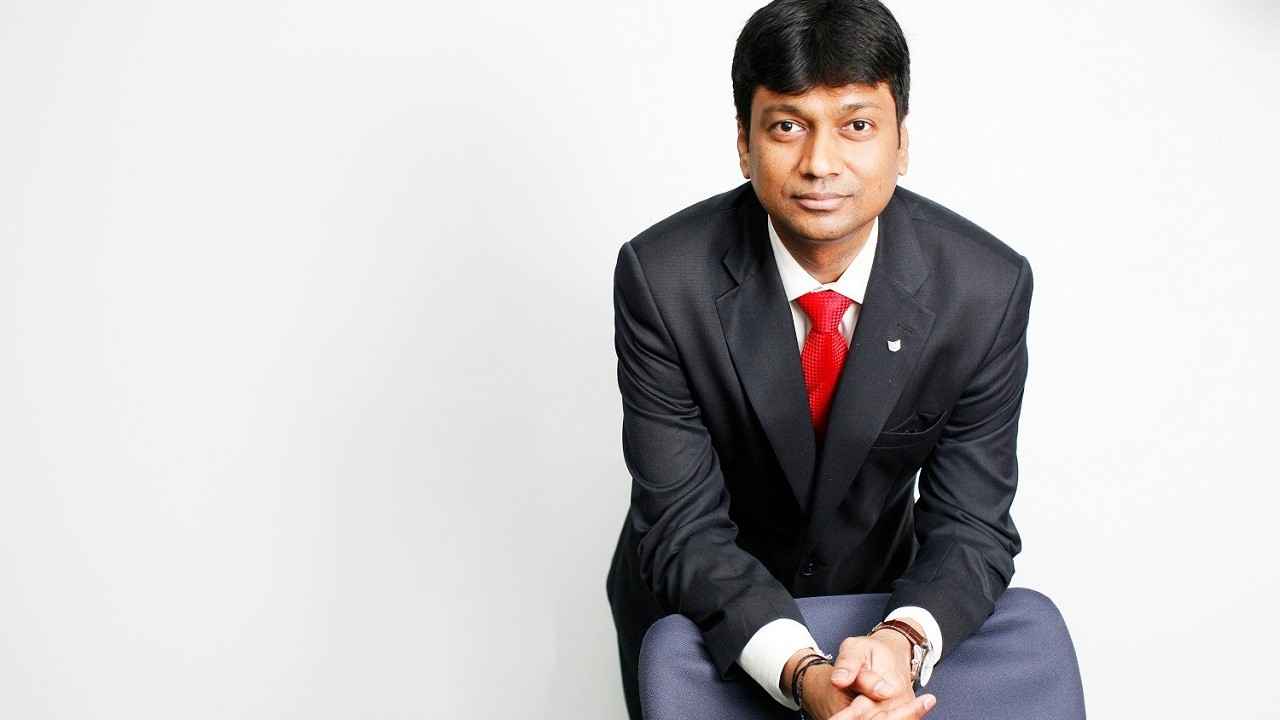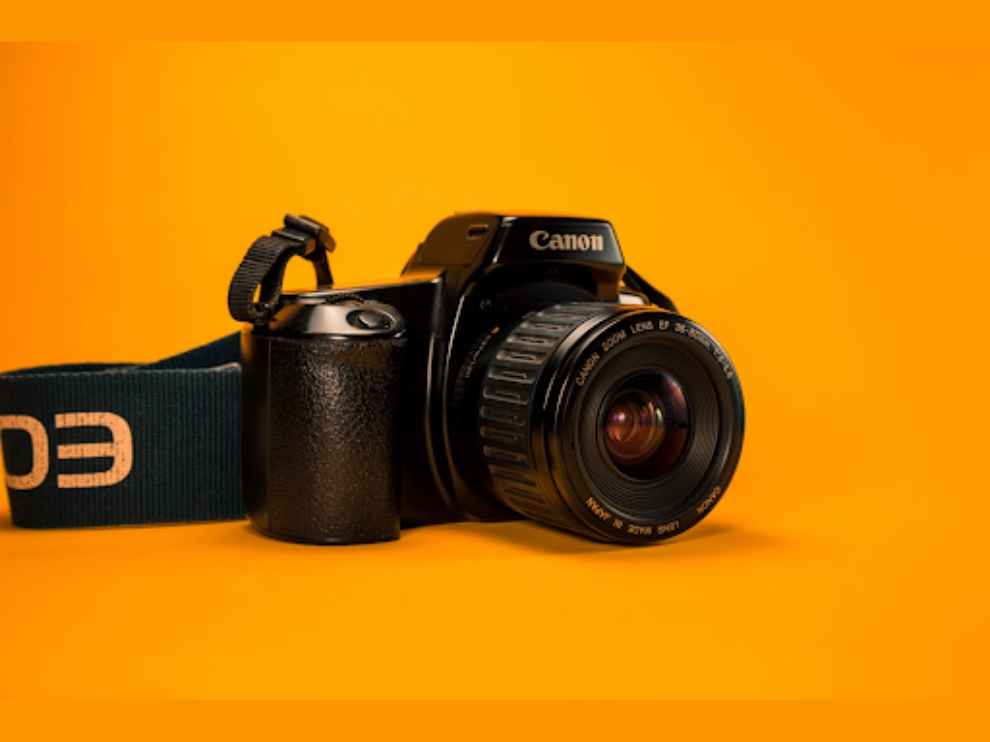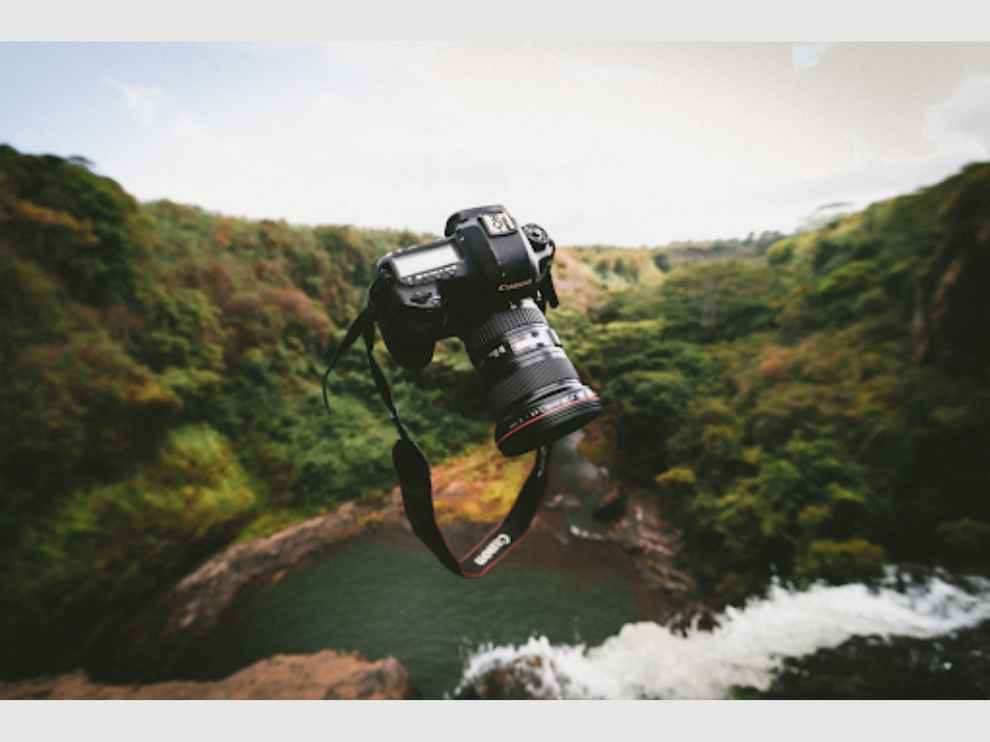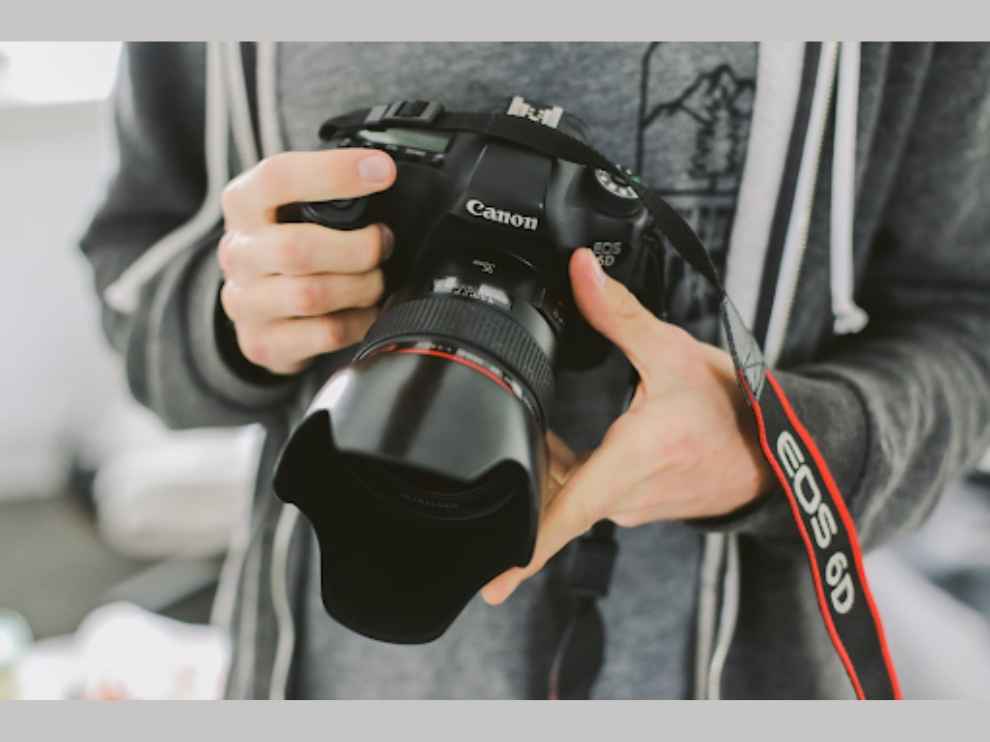Mr C Sukumaran (Canon India) talks to us about the digital camera market in India and Canon’s latest launch, the EOS R6 Mk II

In the wake of the launch of a new camera from the stables of Canon, we had a little talk With Mr C Sukumaran (Senior Director – Consumer System Products & Imaging Communication Business, Canon India) about their new camera the Canon R6 Mk II and a few other questions regarding the new innovations and trends in the digital camera industry. Edited excerpts from our interview below:
Old point-and-shoot segment of cameras have nearly gone extinct, being taken over by smartphones and the rapid improvements that are part of the smartphone camera systems. Is Canon planning to make their cameras more user-friendly, like maybe even adding an Android-like interface?
Mr C Sukumaran – The subject of point-and-shoot has been hanging around for quite a while now. Having said that, let me give you a bit of background on that. Smartphones have impacted camera sales and it all started almost a decade ago. And then over a period, there was significant technological improvement in our own cameras. At Canon, we still have entry level cameras. But what's happened now is that the consumers who are using smartphones have started to upgrade, especially if you look at one of the fastest-growing segments for us which is the vlogger community. And they're the ones who use smartphones very, very effectively. But there's a stage that comes in where they feel the need to upgrade to professional cameras for better video and audio quality and that is when they adopt our mirrorless range. For instance, the EOS M50 Mark II is the go-to model for all vloggers today because of its seamless recording features. So, when it comes to the future, there is no certain answer. However, you can surely expect the best from us, both from a technology point of view as well as from a consumer need point of view. While point and shoot at one stage did impact our business, today smartphones are only really complementing our business growth.
So you can say that smartphones provided that entry-level camera that everybody had in their pocket. So that's why the camera sales improved because of the improvements in smartphone cameras?
Mr C Sukumaran – I wouldn't say it that way. When you look at smartphones, obviously the reach is much deeper and that is why there has been an impact on our point-and-shoot systems. But interestingly, that same impact has now positively changed the consumer's mind. After a spending a certain amount of time using smartphones, consumers now look at upgrading to professional equipment especially content creators. And that's where we play a significant role in empowering such professionals. As a result of this, our mid and entry level segments have been performing very well.
Is something being done to make digital camera interfaces less daunting to new users, maybe some kind of software tweaks that are going to help transition people from smartphones to cameras better?
Mr C Sukumaran – Cameras today have very simple and seamless interfaces. With a tap of a button, one can create a quick video or click quality still images and in a second they are transferred to their smart devices or laptops. It’s all very quick. So basically, the major reason why consumers upgrade to digital cameras is because they need much more than what a smartphone is offering. In terms of the user interface, the UI has changed a lot and become very user-friendly. One can actually simply start with the intelligent auto mode, and simply click and shoot. The camera does all the calculations and settings on its own. Professional cameras provide much more control and flexibility. And that's where the Manual modes or the Program Modes come in. So the user interface is not complex at all. It's very, very intuitive, it's very smart and it's not complex at all.
People who have not been around cameras, but are very avid photographers on their smartphones, would still have a little bit of a learning curve to find their way around an entry-level camera today, even on auto…
Mr C Sukumaran – Yes, you are right, there is a learning curve. But that learning curve offers that flexibility and control to that user. We also do a lot of learning sessions for our consumers. There are a lot of online videos. We do a lot of webinars to help them adapt. But the value that it gives us is quite immense. At one stage the content creators need more, need better quality of sound, better quality of video. So the learning obviously comes with a lot of value in it.
Adding to the previous question, smartphones today employ a lot of computational photography. Are any kind of similar technologies going to be developed for interchangeable lens cameras as well?
Mr C Sukumaran – Yeah. So that's already there. Computational photography already exists in our interchangeable lens cameras. Auto mode already has all these.
But do you get a prompt saying that maybe a switch to this mode to get a better result or something like that?
Mr C Sukumaran – No. So there is only one auto mode which recognises the scene, whether it is a face, scenery, or any other environment, and based on the AI it appropriately changes the setting.
Can you give us an example of what is going on in the background in terms of the software? So if I'm just taking a camera, putting it on auto mode, pointing it at something, it recognizes the scene… what is going on in its brain, basically?
Mr C Sukumaran – For example, if the camera recognizes a face, it identifies that we are about to take a photo or a portrait photo and changes the settings accordingly. Similarly, if it senses that it is scenery or landscape, it will change the settings appropriately for taking landscape photographs. Similarly, if it's one of our modern cameras like the EOS R3 or EOS R6 Mark II, it can even detect advanced subjects like animals, airplanes, trains and fast moving objects.
About enhancing the photo, should cameras add a filter and remove it? That is what a lot of smartphones do these days. Right?
Mr C Sukumaran – We don't do that. There are no filters on our cameras as of now. They are as close to reality as much as possible.
Would there be something like that in the future and would that make sense for camera manufacturers like Canon to add?
Mr C Sukumaran – For future products, we cannot comment now on the features but your suggestions are interesting.
What would be R6 Mk II headlining features? Like what is Canon very proud to have on the EOS R6 Mark II?
Mr C Sukumaran – It's really a true video device for entry-level content creators. Today, we have social media, OTT and an explosion of content creation. There is a huge number of, let's say, web series that are being created as well and a lot more documentaries that are coming out. The Canon EOS R6 Mark II is an answer to all of that. It's a perfect hybrid device for video professionals. You want video? Yes, available. You need still photography? Yes, available. So, it's a really strong device for entry-level professional videographers and then it also cuts across genres as well. The beauty of the EOS R6 Mark II is that at one end it caters to a content creator and on the other end, it caters to a wedding photographer or a wildlife photographer.
So basically, a one-stop shop for all professionals out there?
Mr C Sukumaran – Well, yes, it’s an absolutely perfect device for the professionals out there. And that segment is growing exponentially in India. Weddings is one of the largest industries for us that we cater to. And about a decade ago, in any locality you would find in one or two guys who were known for video. Today that segment is growing exponentially because Tier 2, and Tier 3 growth is pretty good. The other thing we have witnessed is the budding of many entrepreneurs. For example, I'm a professional, but on the weekend, I'd like to be a wedding photographer. So, we've seen that segment growing very fast for us. I just took an example of the wedding industry here, but there is also wildlife which for a long time has been a very niche segment, but we are starting to see growth in the segment as well. I don't need to talk much about OTT and the type of content that's coming up. But there has been exponential growth. At Canon, we have really strengthened our mirrorless full-frame system which we call the EOS R system launched in 2018 with our first EOS R. We followed it up then with the EOS RP then the EOS R5, EOS R6 and EOS R3, which is the high-end model in the mirrorless category. Then we launched the EOS R7 and EOS R10, special models for vloggers. So, we have set a solid range for our consumers because we are really catering to enthusiasts as well as professionals, content creators and movie makers. We also have a range of full-fledged cinema models as well with us with our robust Cinema EOS line-up.
We’d still like to press you on the headlining features that you guys think are the aces of the EOS R6 Mark II, for example, the 6K video recording, (with an external recorder), 40 shots per second on the electronic shutter. So some things like that. What are you guys the most proud of having on this camera?
Mr C Sukumaran – So, the first feature that we are proud of having on the EOS R6 Mark II is the 6K oversampling and getting 4K at 60p. That's one from the movie creator's perspective. It has C-log 3 recording and of course, as you mentioned, 6K RAW recording in an external device. For photographs, of course, the 40 fps or the RAW burst at 30 fps are both key features of this particular camera. The HDR mode especially in photos for moving subjects that's one of the big features as well.
You guys have really updated the autofocus for the R6 Mk II. Now it is much more sticky than the previous iterations.
Mr C Sukumaran – So yes, the autofocus is basically the function of our sensor and the algorithms used in it. The EOS R as such is known for its amazing ultra-fast autofocus.
How does the Indian consumer receive these high-end, full-frame mirrorless cameras? Is it sort of being adopted only by professionals? Or is it also being picked up by amateurs and enthusiasts as well? What does your data say?
Mr C Sukumaran – So, the answer is yes. We are witnessing very promising growth in the amateur segment. While there have always been a lot of enthusiasts in the photography segment, we've started to see that they've started to upgrade themselves to high-end devices. It could be even an EOS R5 or EOS R3. A lot more increase in the segment and if I had to pick their main application, I would say it’s wildlife. A lot of amateurs are now adopting wildlife photography. We've seen that big growth coming in especially post-COVID. Even pre-COVID, we saw that the wildlife segment was growing but it’s even more now. And otherwise, in the other genres, there's definite growth as well. Wedding is our biggest segment, with close to about 10 million weddings happening in India. We are still a very young country, so it's really the driver of our growth here. People in Tier 2, Tier 3 cities invest anywhere between, let's say, 300000 to 1000000 from different classes of photographers. But yes, clearly there is investment in this segment. And that’s why Canon's been launching a range of EOS R systems. On the APSC front, which is the mid-segment, we recently launched the EOS R7 and the EOS R10. The EOS R10 especially caters to the vloggers. When I started our conversation, I mentioned vloggers being a huge contributor to our growth engine. So, we've seen that the EOS R10 adaptability or EOS M50 are models that are almost a benchmark for vloggers. So, I can conclude by saying that almost every segment, we've seen stronger growth.
What are Canon’s plans in the AR and VR segment? Will we be seeing any products like the RF dual fisheye 3D AR lens? If yes, what shape would that kind of technology take?
Mr C Sukumaran – Honestly, we wouldn't be able to comment on that front at this moment because we never comment on any future products. But as you rightly mentioned, the VR fisheye lens that we've launched, is really the first foothold into this field and we've started to see some really good applications that are coming in like real estate and movie maker segments. But what we do is that we are consistently studying patterns. There's a consistent study that we do and the feedback keeps going back to our Tokyo headquarters. So please expect the best to come in.
Do you guys feel the global chip shortage impact on the market is sort of reduced? So what is your thought on how this will impact the pricing and availability of cameras going into next year?
Mr C Sukumaran – So, the shortage of semiconductors is obviously a global issue. And chip makers across the board are facing the challenge to meet the demand and supply gap. And we've seen that for a long time. But it seems that there is an ease out that we have from a different industry, but we've seen just not the chip issue. We've also seen a lot of part supply issues. Commenting on parts coming from across the globe, has definitely impacted firstly the production and the other is that the cost has been going up. While chip shortage may be easing out, there remain other parts supply issues. Even logistics costs have gone up all the way to the roof and we are trying our best to manage the situation. In the first quarter, we do see some sort of impact of these elements but the situation is still unpredictable.







